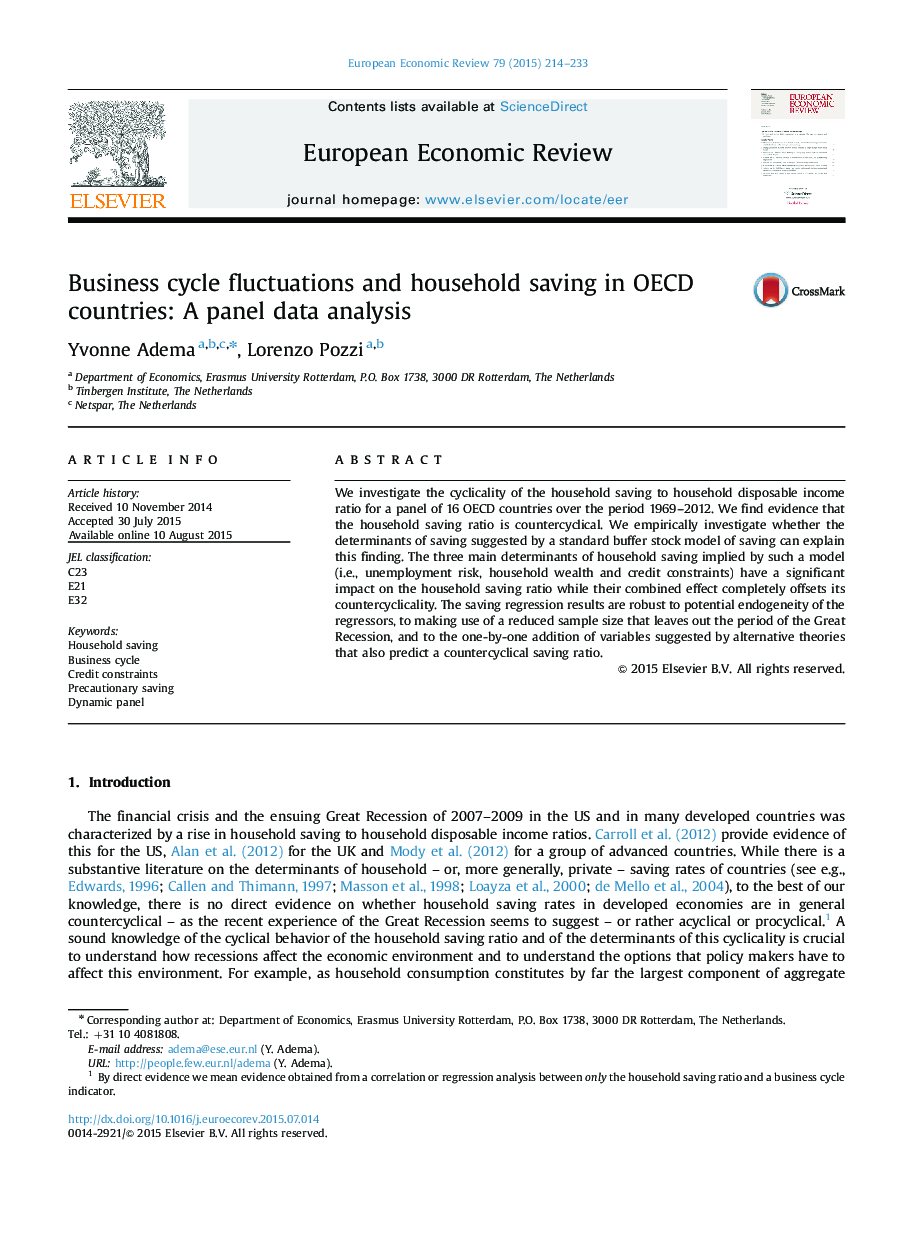| Article ID | Journal | Published Year | Pages | File Type |
|---|---|---|---|---|
| 5066628 | European Economic Review | 2015 | 20 Pages |
Abstract
We investigate the cyclicality of the household saving to household disposable income ratio for a panel of 16 OECD countries over the period 1969-2012. We find evidence that the household saving ratio is countercyclical. We empirically investigate whether the determinants of saving suggested by a standard buffer stock model of saving can explain this finding. The three main determinants of household saving implied by such a model (i.e., unemployment risk, household wealth and credit constraints) have a significant impact on the household saving ratio while their combined effect completely offsets its countercyclicality. The saving regression results are robust to potential endogeneity of the regressors, to making use of a reduced sample size that leaves out the period of the Great Recession, and to the one-by-one addition of variables suggested by alternative theories that also predict a countercyclical saving ratio.
Related Topics
Social Sciences and Humanities
Economics, Econometrics and Finance
Economics and Econometrics
Authors
Yvonne Adema, Lorenzo Pozzi,
